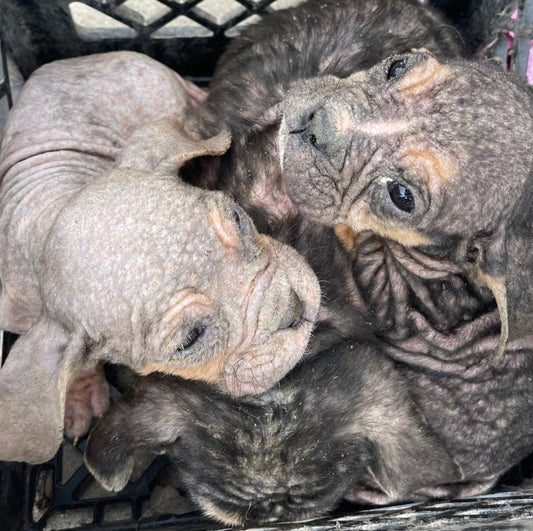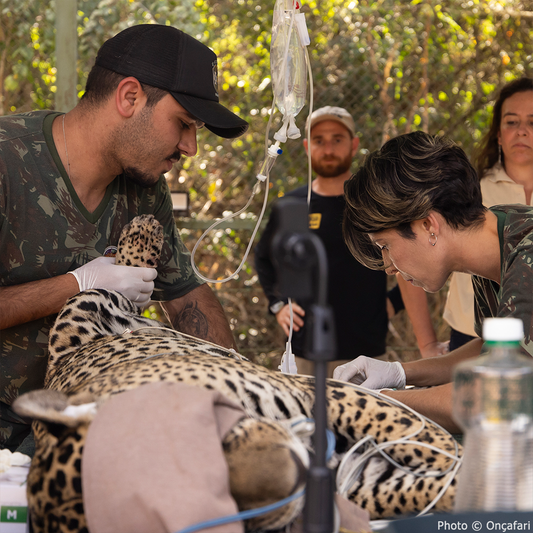Greater Sage-Grouse Faces Extinction as Habitat Disappears
Matthew RussellThe Greater Sage-Grouse, an iconic bird of the American West, is facing a critical threat to its survival.
The loss of its sagebrush habitat, compounded by climate change and human activities, has led to a dramatic decline in its population. Conservation groups and government agencies are working tirelessly to reverse this trend, but significant challenges remain.

A Declining Population
The Greater Sage-Grouse once thrived across millions of acres in the western United States. However, their numbers have plummeted due to habitat loss. The U.S. Geological Survey found that the population declined nearly 80% between 1968 and 2023, with a shocking 40% drop since 2002, reports the Center for Biological Diversity.
This decline is primarily due to habitat fragmentation and degradation, largely from oil and gas development, livestock grazing, and invasive species. Federal, state, and private land managers have long recognized the need to conserve and restore the sagebrush ecosystem.
The Bureau of Land Management (BLM), which oversees nearly 67 million acres of sage-grouse habitat, has been at the forefront of these efforts. Despite these efforts, the sage-grouse population continues to decline, highlighting the urgent need for stronger protections.

Current Conservation Efforts
In response to the alarming decline, the BLM has proposed new management plans to enhance sage-grouse protections on public lands. These plans build on the successes of the 2015 and 2019 plans, incorporating the latest scientific research and input from various stakeholders. The draft environmental impact statement analyzing the potential effects of six proposed alternatives opened for public comment in March 2024, according to the BLM.
One of the key proposals is Alternative 3, which offers the most comprehensive protections for sage-grouse habitat. This alternative includes the designation of Areas of Critical Environmental Concern (ACECs) to protect the most vital habitats from harmful activities such as oil and gas drilling. Conservation groups, including the American Bird Conservancy, are advocating for this alternative, arguing that it provides the best chance for the sage-grouse's survival, reports the American Bird Conservancy.

The Role of the Sagebrush Ecosystem
The sagebrush ecosystem, often referred to as the Sagebrush Sea, is not only critical for the Greater Sage-Grouse but also for hundreds of other species. This vast landscape supports wildlife such as pronghorn, mule deer, pygmy rabbits, and various bird species.
The health of the sage-grouse population is a key indicator of the overall health of this ecosystem. However, the Sagebrush Sea faces numerous threats, including invasive species, wildfires, and climate change, Audubon Rockies reports.
Invasive plants like cheatgrass have altered the fire regime, leading to more frequent and intense wildfires that destroy sagebrush habitat. Additionally, prolonged droughts exacerbated by climate change further stress this fragile ecosystem.
Challenges and Controversies
Despite the clear need for action, efforts to protect the Greater Sage-Grouse have been met with significant challenges and controversies. The bird is not listed under the Endangered Species Act (ESA), largely due to political and economic pressures. A 2014 Congressional moratorium prevents the U.S. Fish and Wildlife Service from listing the sage-grouse under the ESA, despite scientific evidence supporting its need for protection, reports the American Bird Conservancy.
In 2015, the Obama administration developed land-use plans aimed at conserving sage-grouse habitat. However, these plans were weakened during the Trump administration to allow more industrial activity, leading to continued habitat loss, reports the Center for Biological Diversity. The Biden administration has recognized the ongoing declines and initiated revisions to the 2015 plans to provide stronger protections.
 Photo: Adobe Stock / Kerry Hargrove
Photo: Adobe Stock / Kerry Hargrove
A 2014 moratorium prevents ESA listing for the sage-grouse.
The Path Forward
Conservationists argue that a holistic approach is needed to protect the sagebrush ecosystem and the species that depend on it. This includes not only the Greater Sage-Grouse but also the myriad other species and human communities that rely on a healthy sagebrush ecosystem. The BLM's proposed management plans, particularly Alternative 3, offer a promising path forward.
Erik Molvar, executive director of Western Watersheds Project, told the Center for Biological Diversity, "The time has come for strong, science-based protections that will, for the first time, impose reasonable limits on the commercial land uses that are harmful to the birds and their habitats."
This sentiment is echoed by many in the conservation community, who believe that the implementation of ACECs and stricter regulations on industrial activities are essential for the sage-grouse's survival.
The Greater Sage-Grouse stands at a crossroads. The decisions made in the coming years will determine whether this iconic bird continues to grace the Sagebrush Sea or becomes a memory of the past. With strong, science-based protections and a commitment to preserving its habitat, there is hope for the sage-grouse's recovery.
Click below to take action for the Greater Sage Grouse!





















